Top-Rated DevOps Software Based on 2016-17 IT Reports
Every year, more and more DevOps tools appear to satisfy various needs of engineers and businesses. Effective collaboration between development and operations teams is one of the key success factors any business should consider when trying to improve performance. This article stresses the importance of careful selection, benchmarking, and ongoing improvement of the DevOps software.

Since 2012, a group of business researchers has been investigating the role of DevOps in the work of more than 25,000 technical professionals across the globe. Most of the observed companies are US-based. As a result, the 2017 State of DevOps Report was obtained with the main results of the recent five years. Several factors were considered while evaluating the performance:
- Lean management practices
- App architecture
- IT managers responsibilities
- Diversity
- DevOps transformation
- Diversity
- Deployment pain
- Burnout
The basic findings proved that businesses should invest equally in their staff and DevOps tools.
DevOps Automation Tools: Recent DevOps Statistics and Findings
The study by Puppet.Com and other IT resources has covered some of the essential key DevOps tools. To understand their role, it is important to highlight the major findings:
- Businesses with high performance significantly outperform their lower-performing colleagues. They deploy two hundred times more often, with 2,555 times quicker lead times, recover 24 times faster, and demonstrate significantly lower failure rates.
- A technology transformation is an effective method to obtain vivid returns for any business.
- Changing approaches to product development to try something new often leads to higher performance.
- Key tools of DevOps are helpful in most cases, but it’s important to pick them smartly.
There are very few things businesses can do without in-depth research. As far as the main goal of this article is to uncover the best DevOps tools, we have also searched for the latest surveys based on the questionnaires fulfilled by the field experts. The choice was made once we have collected enough feedback concerning DevOps barriers and advantages. More than 50 survey completions made it possible to decide on the main features of DevOps tools as well as the top-rated tools themselves.
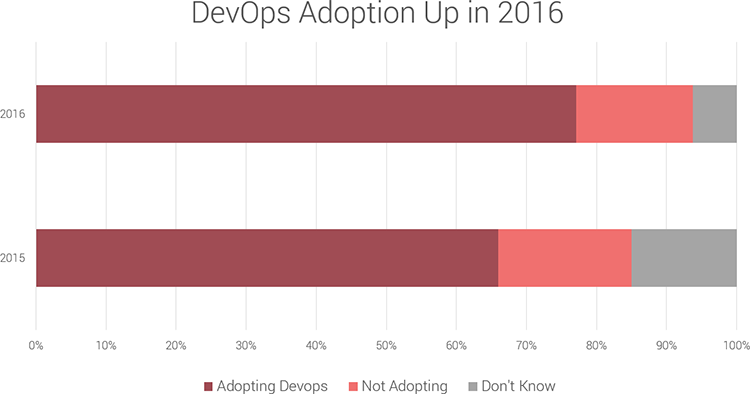
Major Features of Good DevOps Deployment Tools
How should you understand whether your organizations would benefit from adopting tools for DevOps? Small and medium-sized enterprises (SMEs) go on adopting DevOps because of its effectiveness. According to ECS Digital, 67% of SMEs have adopted DevOps in 2017. In contrast, fewer Enterprises (47%) have done the same. However, only 11% of all enterprises reject ever to adopt DevOps – the rest are just searching for the best tools. Those who have successfully adopted the practice name better collaboration and overall performance as the main advantages of using DevOps software.
The process of choosing the right DevOps tools is not an exception. They should be 3-in-1: reliable, secure, and time-tested. While collecting feedback from DevOps engineers and practitioners, our team has decided on the features every good tool must possess. Those are:
- Relevant and helpful functions
- Support for several languages
- Compliance with different operating systems (OS)
- Reliability
- Safety
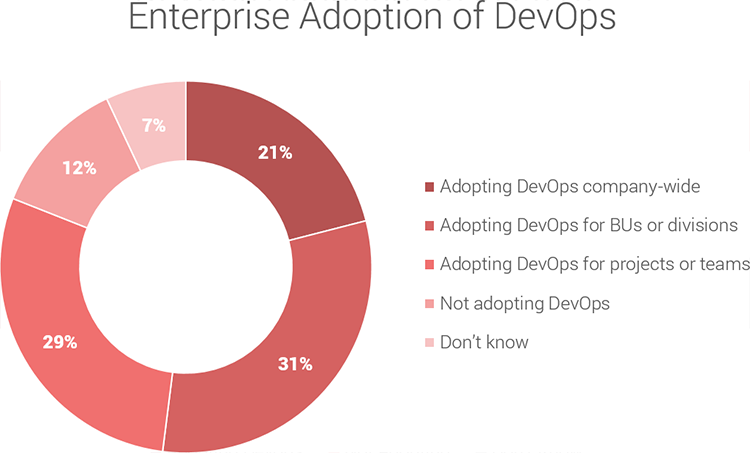
Before moving to the list of the top-rated DevOps automation tools, it is critical to say a few words about the DevOps demands of any development team.
Why Businesses Need Monitoring Tools in DevOps and DevOps deployment tools
First of all, the tools allow automating building and deployment. Let’s say an organization ABC has a virtual machine named George. It’s doing virtual builds thanks to George. The opportunity to access it distantly, break down the most recent source code, build and deploy artifacts from it makes this instrument an example of a good DevOps tool. Provisioning the servers and other “junk” takes plenty of time, so it is better to leave such tasks to the DevOps deployment tools instead of bothering personnel.
Next, it’s all about provisioning servers. It’s up to the company to choose whether provisioning or deploying to servers comes first. Anyway, the process of provisioning requires the understanding of the application’s type and the way business hosts it. Most organizations set up new services rarely. A massive scale allows adding new services frequently. As a result, such apps obtain more traffic.
Finally, the development team needs optimization and monitoring of the app performance. Most of the developers focus on the following six factors:
- APM – code level app performance visibility
- Transaction tracing to see what the code is doing
- Metrics monitoring
- Logs (aggregation, observation, and management)
- Errors (reporting & alerting)
- Alerts themselves (robust monitoring)
Based on these needs, it is possible to define the most popular software each DevOps engineer may try. The list you will find below includes the best instruments for logging, configuration management, safety, control, and automation.

8 Examples of the Most Preferred Open Source DevOps Tools
There is no certain order in our list – each tool is equally useful.
Nagios and Icinga
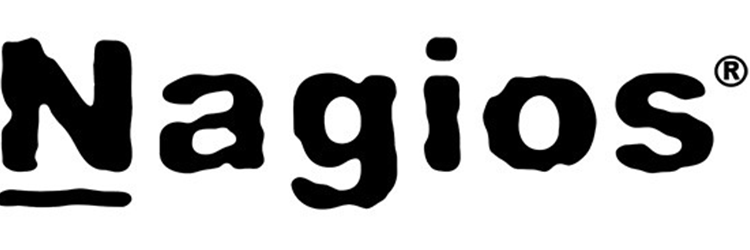
Nagios is one of the first monitoring solutions ever. Thanks to the all-time expanding community of contributors who develop plugins for it, Nagios is extremely effective. Icinga is a fork of Nagios. The updated version provides an up-to-date user-experience as well as a range of new abilities. Most of the businesses who apply this tool stay satisfied with its scale and excellent performance. It is recommended to switch to Icinga in the closest future.
Monit

To continue the discussion on open-source DevOps tools, we should include this one on the list. The tool is rather simple in usage. The main purpose is to make sure that each process runs correctly and smoothly. In case there is a failure in Apache, the team can see this software to relaunch the process. Monit is recommended for multi-service architecture to handle multiple micro-services. Avoiding the problem is not enough. However, control each restart to solve problems by finding proper ways out. Just monitor the tool’s log files and stay alerted to every relaunch.
GitHub

Perhaps, it’s one of the most known and spread DevOps technologies. It is a web-based Git and internet hosting service often used for code. The tool is perfect for source code management (SCM). It also allows a distributed version control. The main features of the software include bug tracking, feature requests, task management, and guidelines for each project.
New Relic
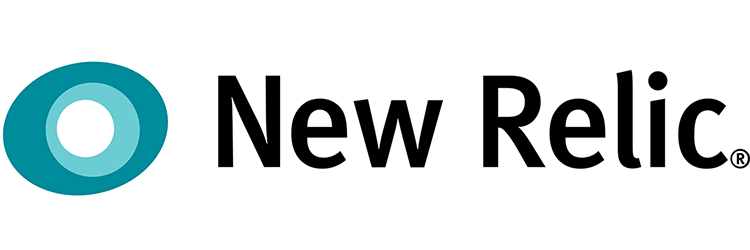
New Relic should be on every upgraded DevOps tools list. The tool provides reliable and integrated data for every phase of the DevOps trip. The usage of New Relic guarantees increased business agility and higher speed. Shared visibility and detailed metrics are the major benefits of this software. In case your business decided to change its current DevOps structure, New Relic may assist in transitions of that kind.
Jenkins

Many businesses call this one a leader in DevOps automation. The primary goal of the instrument is to control executions of repeated assignments. The main advantage is the simpler project changes integration as well as the ability to determine the problems faster. Jenkins appears in the shape of a Java-based program compatible with Windows, Mac OS X, and more Unix-like OSs. It is easy to install and configure using a web interface.
Consul.io
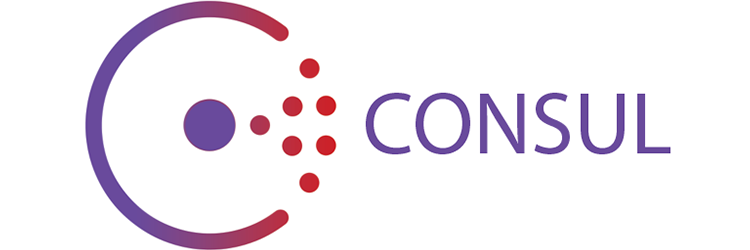
Consul is another tool that allows configuration in most recent apps that are constructed specifically for microservices. It provides internal DNS names for services. DevOps engineers who have any problems with registering names would enjoy Consul.io. As a result, it becomes possible to get service names instead of specified machines. The tool is convenient when working with clusters. What we mean is when there are multiple machines joined in one cluster, it is better to sign up them as one whole entity to access it at any moment without any problems.
Chef

Among all best DevOps tools, it is possible to notice Chef somewhere on the top of the list. The tool takes care of various aspects, including IT automation and configuration management. The software is known for its excellent security. Chef allows original managing configurations thanks to the variety of recipes and resources. The tool checks nodes from a single server, updating them for DevOps team. The instrument integrates with all main cloud providers.
Vagrant

Vagrant established by HashiCorp assists in creating and configuring lightweight, renewable, and transferable development environments. The tool has simple-to-use workflows and is focused on automation. The installation process is fast and easy. It will run on Mac OS X, Windows, and Linux. With a single command, Vagrant will combine your entire development environments to let DevOps team participants have identical environments.
See also: How and Why DevOps Benefits the Business Process
Download Free E-book with DevOps Checklist
Download NowWhat’s Next?
Out of all tested tools, Chef and Jenkins remain the most popular. However, it does not mean your business can’t try other monitoring tools in DevOps.
They are all a bit different from their goals, prices, and key features, but each is helpful in its unique way. Most of businesses do not support a “choose one” approach.
Thus, we recommend deciding on more than one configuration tool to meet your business goals and the DevOps team’s needs in particular.
Want to receive reading suggestions once a month?
Subscribe to our newsletters